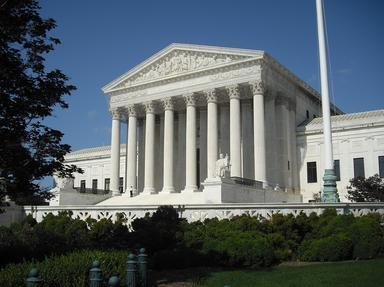Quiz Answer Key and Fun Facts
1. John Rutledge was the second Chief Justice. His term only lasted 125 days. Why was it so short?
2. The third US Chief Justice, Oliver Ellsworth, was not nearly as famous as his successor, John Marshall. However, Ellsworth had the distinction of heading up the court when it heard its first case between two states. What were the parties in this case?
3. The sixth Chief Justice had two claims to fame. He presided over the first impeachment trial of a US president (Andrew Johnson) and his portrait was on the $10,000 bill. Who was he?
4. The seventh Chief Justice, Morrison Waite, presided over a busy Supreme Court. Approximately how many cases per year were heard during his fourteen year tenure?
5. Melville Fuller was the eighth Chief Justice of the US Supreme Court. One of the court's most infamous cases was decided during his term. Which one was it?
6. The ninth Chief Justice, Edward Douglass White, was in charge when the Supreme Court ruled in the case of Guinn v United States that "grandfather clauses" were unconstitutional. To what did these clauses relate?
7. The tenth Chief Justice isn't obscure but he was better known for having been president of the United States about a decade before he joined the Supreme Court. Who was he?
8. What did the eleventh Chief Justice, Charles Evans Hughes, have in common with his predecessor?
9. The twelfth Chief Justice, Harlan Fiske Stone, presided over the court during World War II. One of the court's cases, Korematsu v United States, upheld which controversial policy?
10. The thirteenth US Chief Justice, Fred Vinson, wrote the landmark Brown v. Board of Education decision.
Source: Author
andymuenz
This quiz was reviewed by FunTrivia editor
stedman before going online.
Any errors found in FunTrivia content are routinely corrected through our feedback system.

